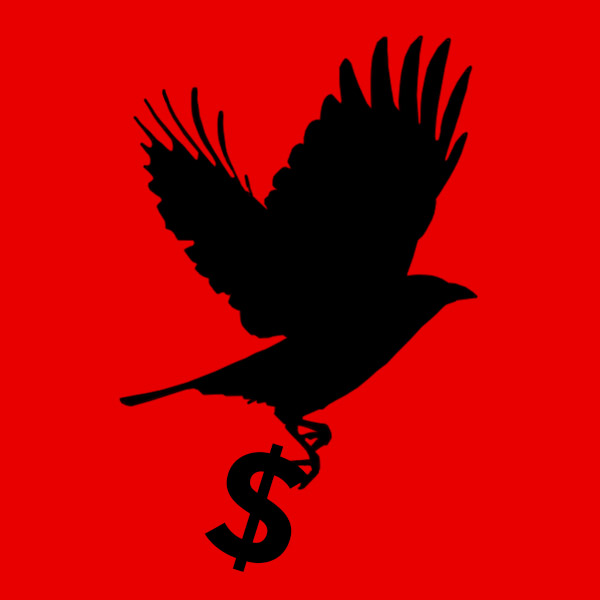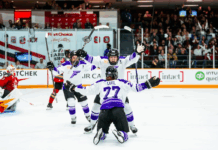
If it failed once before, how do we know it won’t fail again?
That’s a question Carleton Ravens football head coach Steve Sumarah was asked more than once by prospective players and their parents over the last several months.
Can you blame them?
University administration canned the football program in 1999 for financial reasons, and some wonder whether a similar fate could be in the cards if things fall off the rails a second time.
But there’s one fundamental difference this time around: it’s no longer the university’s money at play.
Learning from the best
Following a model successfully established at Laval University, Carleton’s reborn football program is being funded privately by Old Crows Football Inc., a not-for-profit corporation composed of community members and Carleton football alumni.
When Carleton’s board of governors voted to approve the reinstatement of Ravens football, they did so under the condition that $5 million could be raised by the Old Crows to support the long-term stability of the program.
That specific amount was chosen to ensure the program is sustainable for at least five years, as the program’s expenses are expected to reach $1 million annually — $800,000 for the operating budget and $200,000 for infrastructure costs.
To date, it is believed donations have reached upwards of $6 million. While Kevin McKerrow, vice-president of Old Crows Football Inc., wouldn’t provide a specific figure, he did say over $100,000 was raised over a two-month period late last year alone.
“We’re confident that the model will work and work very well,” McKerrow said. “If we didn’t sell a single ticket or get a single sponsor from this point forward, we’re fully funded for the next five years.”
In reality, it will be much longer than that considering infrastructure costs will decrease considerably after the first few years and the program will continue to raise funds through ticket sales, advertising and sponsorship, concessions and merchandising, and other initiatives like the Junior Ravens Football camp.
Sustaining the program
As of mid-February, the program had secured around 110 pre-sale deposits for season tickets, according to Carleton athletics’ marketing manager Sheryl Hunt.
Does that mean donations are no longer needed? McKerrow wouldn’t go that far. He said it’s conceivable the program could sustain itself without any more donor support, but only if they exceed their short-term goals on other revenue generators.
“The way I envision it, five or six years out I think there will probably still be the need for — and the benefit from — donations coming in, which will help drive the program and allow us to do more things,” McKerrow said, adding the Old Crows have verbal commitments from several potential donors.
Carleton says its football operating budget is the highest in the province (though Laval’s budget of around $2 million per year still tops Canadian Interuniversity Sport). It includes staff salaries, game travel, recruitment, training camps, equipment, athletic awards, and other related expenses.
By comparison, the defending OUA champion McMaster Marauders have a football budget that is believed to be anywhere between $500,000 and $600,000.
There’s no doubt that having the highest budget in the league gives Carleton an advantage in some senses. For example, the Ravens have at least five full-time coaches on staff while most OUA teams only have two or three.
Financing talent
When it comes to offering athletic scholarships, however, there are certain restrictions in place the Ravens must follow like every OUA football program.
Varsity athletes in Ontario cannot receive a scholarship greater than $4,000 in an academic year and only students with an 80 per cent average in high school are eligible. Additionally, they must maintain a 70 per cent average in university to continue receiving the scholarship in subsequent years.
There’s also a limit on how many players can receive the maximum amount. For football, around 52 players are eligible to receive the maximum (based on Statistics Canada’s 2011-12 average tuition fees) for an estimated total of around $208,000 per team, according to Sumarah.
Financially, Carleton has the means to spend the maximum amount. They aren’t the only ones— the University of Ottawa Gee-Gees football team also falls into that category, according to assistant athletics director Colin Timm— but not every team has the same luxury.
The Wilfrid Laurier Golden Hawks football team, for example, only had $125,000 allocated to athletic scholarships last year, according to athletics director Peter Baxter.
For these reasons, the “Laval model,” which Carleton has adopted, sometimes draws criticism for creating an uneven playing field. To add fuel to the fire, Laval has won six of the last 10 Vanier Cups. McKerrow said he can understand the criticism, but he looks at it from a different perspective.
“[Laval has] raised the bar and I think that’s good for university sport across the board,” he said, adding it’s a model other CIS teams are starting to emulate.
“And I think it pushes organizations like the CIS that haven’t always been at the forefront of change and finding new creative ways to tackle old problems. Laval’s approach has moved varsity sports in a direction that’s good for the country.”
Whether or not such a model is fair, or unfair, “it’s the reason why Carleton is back,” as Queen’s Gaels head coach Pat Sheahan put it.
“So I think, in this case, it’s a great model,” he said.





